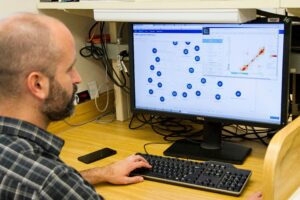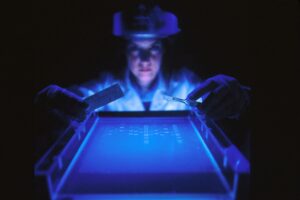
The way someone walks, talks, smiles, or gestures offers a window into their identity. Whether through the flick of an eyebrow, the rhythm of a walk, or the tilt of a head, movement speaks volumes. Recent research suggests that these movement patterns could be as unique as a fingerprint, forming what is now being termed a “movement fingerprint.”
This new study indicates that individuals may exhibit a distinctive style of movement that is characteristic of their identity. For instance, a person who uses expressive facial gestures might also speak with animated hand movements or walk with a lively gait. These consistencies could form a motion fingerprint unique to each individual.
Facial Movements: A Key to Identity
Everyone has their own style of moving their face, such as how they raise an eyebrow, purse their lips, or squint when laughing. These patterns of movement help us recognize familiar people even when visual quality is poor, such as in low lighting or from a distance. As a person becomes more familiar to us, we become attuned to the way they move, learning their unique patterns of motion, just like we remember their face or voice.
Human faces are constantly in motion; they blink, smile, grimace, and talk. Researchers categorize facial motion into rigid movements, like turning or nodding the head, and non-rigid movements, such as expressing emotion or speaking. It is these non-rigid movements that tend to be most personally distinctive.
The Role of Gestures and Gait
The way we gesture with our hands, shift our posture, and tilt our heads all carry identity information. Gestures are often shaped by personal habits or cultural norms. For example, someone might habitually nod three times when agreeing or use a distinctive hand wave common in their home country.
Gait, a person’s walking style, is one of the most studied body movements. Early research, such as a 2005 study, investigated participants’ recognition of identity from gait using point-light displays. In this study, bright spots were placed on key areas of a person’s body, and participants could only see these spots against a dark background. The study found that participants could fairly accurately identify individuals based on how these spots moved.
Characteristics such as stride length, limb movement, posture, and pace form a consistent motion pattern that is unique and surprisingly difficult to fake, making gait analysis a reliable clue for identifying people.
Understanding Movement Fingerprints
The concept of movement fingerprints is gaining traction in both behavioral and brain imaging studies. The paper proposes that people have an overall style of movement. However, more work needs to be done to find direct evidence of movement fingerprints, such as identifying which parts of the brain process these movement-based identity cues.
Research shows that the posterior temporal sulcus, an area of the brain located roughly above the ear on each side, responds not just to faces and bodies but to how someone moves more generally. This area is active when we hear voices or see people speak, suggesting it may help link motion and sound. It also plays a key role in allowing us to understand our social world, interpreting other people’s actions, determining where they are looking, and picking up on social cues such as gestures, facial expressions, and changes in gaze direction.
Real-World Applications and Future Directions
While motion-based identity traits aren’t as stable or specific as fingerprints or DNA, they are what researchers call soft biometrics: useful but not always accurate. As we better understand the link between motion and identity, exciting real-world applications are emerging.
Motion analysis could support contactless identity verification, from gait-based authentication at airports to gesture-based identification in smart environments, such as homes that respond to a user’s unique movement patterns. In clinical settings, movement analysis might help support people with social cognition impairments, face recognition, or movement issues, such as helping a doctor identify changes in the way a patient produces non-verbal cues.
However, many questions remain. Researchers still aren’t sure how consistent motion fingerprints are as someone ages or in different contexts. Individual differences and environmental factors like lighting, clothing, or stress could affect them.
Figuring this out could not only help improve technologies like social robots and develop tools for people with recognition and communication difficulties, but also tell us more about how we process and react to other people.
The exploration of movement fingerprints is just beginning, but the potential implications for security, healthcare, and technology are vast. As research continues to evolve, it will be fascinating to see how this new understanding of human movement shapes the future.





